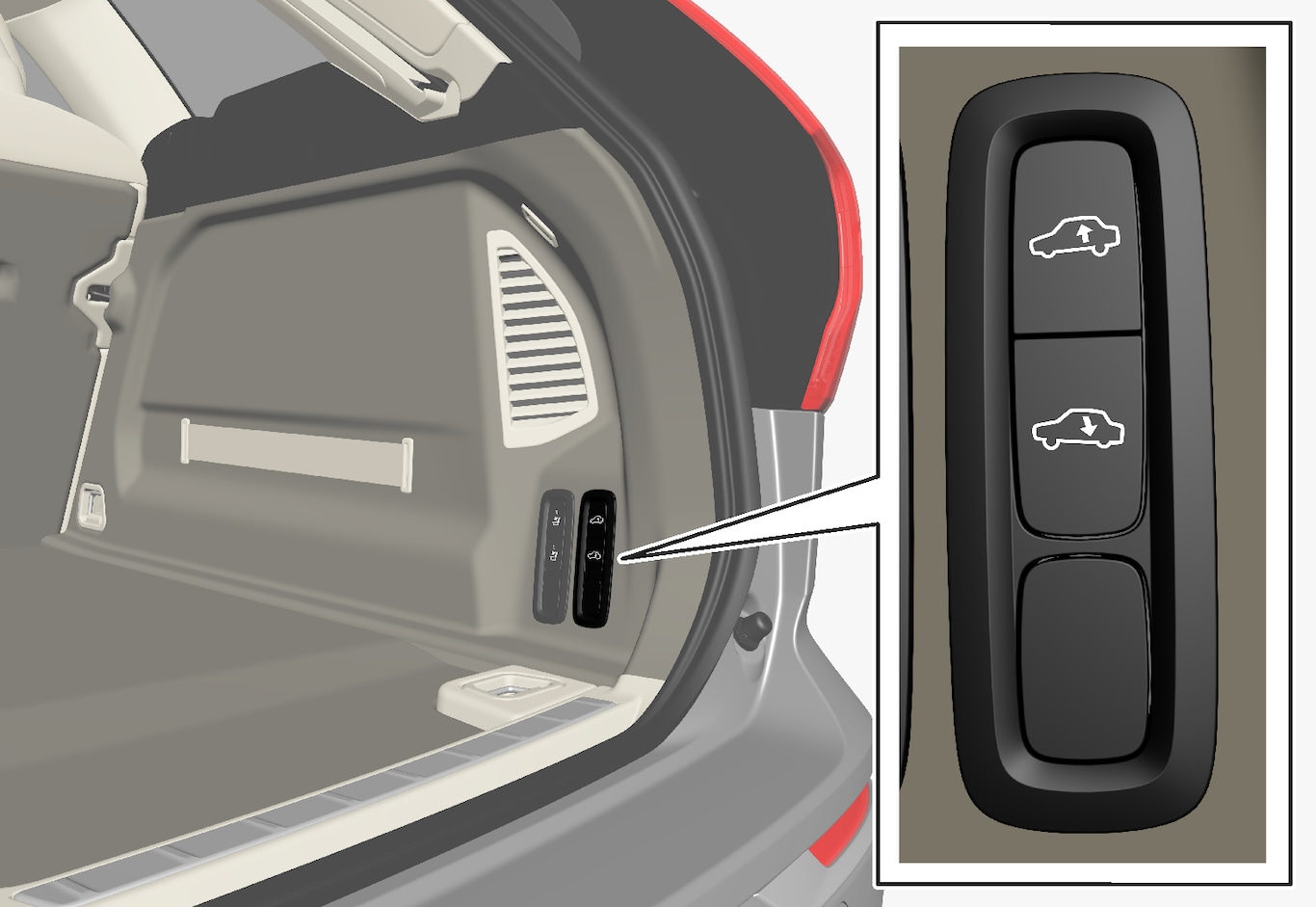Load-carrying capacity is determined by the vehicle's curb weight. The total weight of all passengers and any installed accessories reduces the vehicle's load-carrying capacity by the corresponding amount.
Warning
Loading the cargo compartment/trunk
- Position objects so they are pressing against the rear seat backrests.
- Heavy objects should be positioned as low as possible. Avoid placing heavy objects on folded-down seat backrests.
- Cover sharp corners with a soft cloth or similar to help prevent damage to the upholstery.
- Use the load anchoring eyelets and tensioning straps or similar to secure all objects.
Warning
Warning
Warning
Always secure the load. Otherwise, it may shift during heavy braking and injure people in the vehicle.
Cover sharp edges and sharp corners with something soft.
Turn off the engine and apply the parking brake when loading/unloading long objects. Otherwise, it is possible for the load to reach the gear lever or gear selector and move it to a drive position – which could cause the vehicle to begin rolling.
Extra cargo space
The rear seat backrests can be folded down to increase cargo space in the cargo compartment/trunk and simplify loading. If the rear seat backrests are folded down, make sure that no objects loaded into the vehicle prevent the WHIPS system for the front seats from functioning correctly.
A ski hatch in the rear seat can be folded down to carry skis or other long, thin objects.
Raising/lowering the rear end of the vehicle*
The rear end of the vehicle can be lowered or raised for easier loading into the cargo compartment/trunk or to facilitate attaching a trailer*.
The controls for raising/lowering are located at the rear edge of the right side panel in the cargo compartment/trunk.

The controls consist of two buttons ‒ one button for lowering and one button for raising the rear end. Press and hold the relevant button until the desired height is reached.
The rear end of the vehicle cannot be raised higher than its normal height.
The rear end will return to the normal height when the vehicle begins driving.